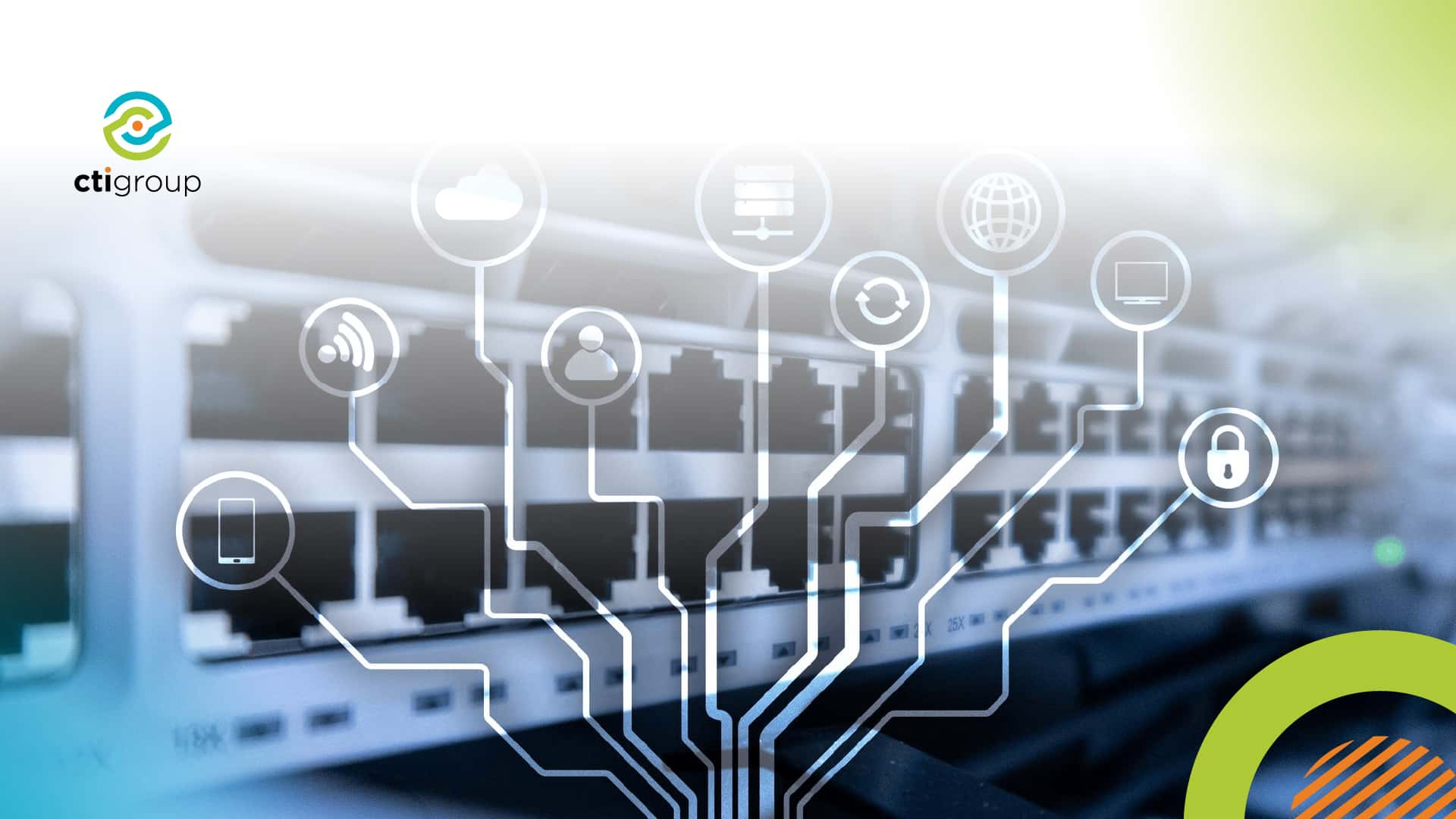Network infrastructure is the backbone of digital technology, enabling seamless connectivity and collaboration across the globe. As a critical element of modern communication, it ensures that data is transmitted quickly, securely, and efficiently. Bill Gates once said, “The Internet is becoming the town square for the global village of tomorrow.” In this context, network infrastructure plays a vital role in supporting global communication, accelerating innovation, and enabling digital transformation.
But what is network infrastructure? What are its key components, and how does it empower businesses in today’s highly connected world? Read on to explore why network infrastructure is the cornerstone of modern technology and how it drives progress in the digital age.
Definition and Importance of Network Infrastructure
Network infrastructure comprises a system of hardware, such as routers, switches, and servers, combined with software like firewalls and network monitoring tools. This system facilitates efficient communication and data transfer between devices within a network, whether local or global.
The importance of network infrastructure lies in its ability to support daily operations, manage data, and enable cutting-edge technologies such as cloud computing and IoT. A reliable infrastructure ensures smooth business operations while fostering technological innovation.
The Role of Hardware and Software in Modern Networks
Hardware like routers, switches, and servers provides the physical foundation for data flow across a network. Meanwhile, software such as firewalls and monitoring tools ensures security, control, and efficiency. Together, they form a robust and adaptable network capable of meeting modern demands.
The Impact of Network Infrastructure on Digital Transformation and Business Success
Network infrastructure is essential for adopting advanced technologies such as cloud computing, IoT, and big data analytics. With stable and reliable networks, businesses can automate processes, enhance productivity, and deliver superior customer experiences, gaining a competitive edge in the global market.
Key Features and Components of Network Infrastructure
A network infrastructure comprises various elements working together to ensure efficient and reliable connectivity. From hardware as the backbone to advanced technologies like Software-Defined Networking (SDN), each component plays a crucial role in building a strong network. Here are the key features and components of network infrastructure.
Nodes and IP Addresses: Communication Points in a Network
Nodes are devices such as computers, smartphones, or IoT devices that serve as communication points within a network. Each node is assigned a unique IP address, ensuring data is sent and received accurately. Together, nodes and IP addresses create a well-organized and efficient communication system.
Routers and Switches: Supporting Data Flow Efficiency
Routers direct data traffic between different networks, while switches manage data flow within the same network. Their combined functionality ensures fast and efficient data transfer, minimizing bottlenecks and optimizing operational performance.
Wireless Access Points: Bridging Wireless and Wired Connections
Wireless Access Points (WAPs) allow wireless devices like laptops and smartphones to connect seamlessly to wired networks. They offer flexibility and mobility while maintaining optimal performance and security in dynamic work environments.
Software-Defined Networking (SDN): Flexible Network Management
SDN enables centralized, software-based control of network resources, allowing for easier configuration and optimization. This technology enhances agility, reduces downtime, and increases operational efficiency in a dynamic business landscape.
Benefits of a Robust Network Infrastructure for Businesses

A strong network infrastructure is not just a technical necessity but a strategic asset that drives business growth. From operational efficiency to superior user experiences, here are the key benefits of reliable network infrastructure:
High Scalability to Meet Changing Business Needs
Scalable networks allow businesses to adapt seamlessly to growth or evolving operational demands. For instance, when expanding to new locations or integrating additional users, a scalable infrastructure ensures smooth transitions without requiring extensive upgrades. This adaptability reduces long-term costs while supporting business agility and flexibility.
Enhanced Reliability with Load-Balancing and Fault Tolerance
Features like load-balancing evenly distribute network traffic, ensuring optimal performance even during high-demand periods. Meanwhile, fault tolerance minimizes the risk of disruptions by maintaining operations despite hardware or system failures. Together, these features guarantee consistent and reliable network performance.
Superior Security with Modern Protections
With threats like cyberattacks becoming more sophisticated, robust security measures are essential. Technologies such as firewalls, VPNs, and advanced access controls provide layered protection to prevent unauthorized access, safeguard sensitive data, and ensure compliance with security regulations.
Strong ROI from Scalable Investments
Investments in network infrastructure yield significant returns by streamlining operations and minimizing downtime. Scalable systems reduce the need for frequent upgrades, enabling businesses to achieve cost efficiency and long-term financial gains as they expand their operations.
Optimized User Experience for Employees and Customers
A stable and fast network enables employees to work efficiently without interruptions, boosting productivity. For customers, seamless connectivity enhances their interaction with digital platforms, strengthening trust and loyalty. This creates a win-win scenario for both internal and external stakeholders.
Modern Applications of Network Infrastructure

Network infrastructure is pivotal across various applications, from personal connectivity to large-scale business operations. Below are examples of how it drives innovation and connectivity.
PANs: Personal Networks for Individual Devices
Personal Area Networks (PANs) are designed for close-range connectivity, linking devices like smartphones, smartwatches, or other personal gadgets. These networks facilitate secure and efficient data sharing for tasks such as file transfers or device synchronization, making them ideal for everyday use in personal settings.
LANs: Localized Networks for Offices and Homes
Local Area Networks (LANs) provide high-speed connectivity for devices within a confined area, such as a home, office, or school. They enable seamless communication, resource sharing (like printers or shared storage), and centralized management, making them essential for both personal and professional environments.
WANs: Global Networks for Multinational Businesses
Wide Area Networks (WANs) connect geographically dispersed locations, supporting global communication and collaboration. For example, a multinational company can integrate its offices across continents, enabling real-time data exchange and efficient cross-border operations.
MANs: Integrated Networks for Urban Areas
Metropolitan Area Networks (MANs) provide network connectivity across cities or large urban areas. These networks are used to link public services, such as transportation systems, healthcare facilities, and educational institutions, creating interconnected urban ecosystems that enhance city-wide efficiency.
Cloud Networks: Flexible Infrastructure for Modern Businesses
Cloud networks offer virtualized infrastructure that scales according to demand. Businesses can leverage cloud solutions to reduce dependency on physical hardware while benefiting from on-demand access to computing resources, enabling greater efficiency and cost savings.
IoT Networks: Automation and Real-Time Connectivity
IoT networks connect smart devices and sensors to facilitate real-time data collection and automation. These networks are integral to industries like manufacturing, where connected machinery streamlines production, and smart homes, where devices automate everyday tasks for convenience and efficiency.
Also Read: Technology Trends 2024: Strategic Insights for Innovation in 2025
Discover Advanced Network Solutions with CTI Group
CTI Group is committed to delivering cutting-edge network solutions tailored to modern business needs. As a leading provider of cloud and digital services in Indonesia and Southeast Asia, we offer end-to-end solutions, from consultation to post-sales support.
With extensive experience and a robust portfolio, CTI Group designs strategic solutions that drive operational efficiency, productivity, and business sustainability. Contact us today to embark on a smarter, more efficient digital transformation journey.
Author: Danurdhara Suluh Prasasta
Content Writer Intern CTI Group

